Carolina C. Höfs
and Flavia Diab

Carolina Höfs, anthropologist and dancer, met Flávia Diab, historian and cultural producer in 2006 and started their project called Pau de Arara. This project arised from Carolina investigation on migration lifestories, ethnography and their intersection with dance and gave wings to the sound installation and ethnographic performance Largo São Domingos, Our Home, to a series of sound pieces, a dance solo “Chão”. Carolina made her doctoral thesis “Griots Cosmopolitas” and has an ongoing monograph on analysis of movement in perspective of the thought of Laban and the djaliá. Flávia is the actual artistic producer and coordinator of the “Hospital Relation” in Operação Nariz Vermelho, a program of Hospital Clowns for children in Portugal.
Christine Moderbacher
and Iris Blauensteiner
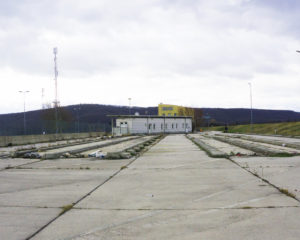
Christine Moderbacher is an anthropologist and documentary filmmaker. Completing her PhD at the University of Aberdeen in 2019, she is currently working at the Max Planck Institute of Social Anthropology in Halle, Germany. Her documentary films are shown in international film festivals and received a number of prizes.
Iris Blauensteiner is an Austrian filmmaker and writer. Having studied Art and Digital Media at the Academy of Fine Arts Vienna and film and media studies at the University of Vienna, she is currently writing on her second novel. Her fiction and documentary films are shown in international film festivals and received national and international awards.
Claire Vionnet
and Christelle Becholey Besson
Claire Vionnet is an Anthropologist, Dance Scholar and Dancer. She wrote a PhD on the creation of gestures in contemporary dance, exploring notions of body, improvisation, senses, shadow/ghost, production processes, autoethnography, phenomenology. She works creatively with dance communities (West African Dances, Contemporary Dance, Contact Improvisation), reflecting on the way art/dance produces knowledge. Marked by her time lived in Africa, she is particularly interested in the role humanities play in society and keen to reflect on better reuniting Anthropology, Art and Society. She develops alternative forms of ethnographic restitution (video-essay, lecture-performance, performative dialogs in festivals) to reach a broader audience beyond Academia.
Christelle Becholey Besson was born in 1985 in Switzerland, she lives and works in Vancouver.
“In my practice, I like to follow my curiosity, which takes me in unfamiliar places. I then use and misuse art to shape fictional narratives and create atmospheres from parallel times. Collaboration is essential to my creative process. Sharing bring complexity and chaos to the linear thinking and give me more unknown”.
Filipa Pontes

Filipa Pontes is a Portuguese visual artist and researcher. She pursues a degree in Graphic Design (ESAD.CR, Caldas da Rainha, Portugal, 2005) postgraduation in Creative Illustration (EINA, Barcelona, Spain, 2007) and holds a PhD in Fine Arts – Drawing (FBAUL, Lisbon, Portugal, 2020).
She connects art practice with a socially engaged perspective rooted in a reflexive and self-reflexive approach.
Filipa Pontes works mainly in the drawing field to create performances, installations and artist books.
In the last ten years, she participates in international exhibitions and artistic residencies. Also works as an independent curator and as a professor. Lives between Berlin and Lisbon.
Gabriele de Seta
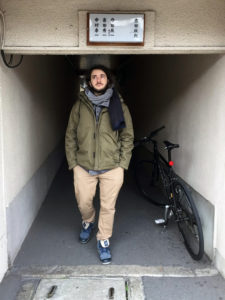
Gabriele de Seta is a media anthropologist. He is currently a Postdoctoral Researcher at the University of Bergen. His research work, grounded on ethnographic engagement across multiple sites, focuses on digital media practices and vernacular creativity in China. He is also interested in experimental music scenes, internet art, and collaborative intersections between anthropology and art practice.
Kate Hennessy
and Trudi Lynn Smith

Kate Hennessy and Trudi Lynn Smith are anthropologists and practising artists that have worked together as curators and collaborators since 2009 as a part of Ethnographic Terminalia, an international curatorial collective exhibiting and creating works at the intersection of art and anthropology. Hennessy is an Associate Professor at Simon Fraser University’s School of Interactive Arts and Technology, where she leads the Making Culture Lab, an interdisciplinary research and production studio. Smith is an Adjunct Assistant Professor in the School of Environmental Studies at the University of Victoria, and recently held the position of artist-in-residence with Hennessy in the Making Culture Lab. Together they explore cultural practices of media, museums, and archives in the context of technoscience. Their art practice in video, photography, and text has engaged with entropy in diverse collections and the ecological, social, and political impacts of new digital memory infrastructures. As ethnographers as well as artists, Hennessy and Smith highlight collaboration as a central aspect of their work, working with both human and non-human entities to represent the politics of the material world and its relationships with human agency.
Lee Tzu-Tung
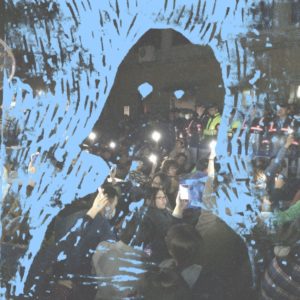
Lee Tzu-Tung is a conceptual artist. Her participatory projects integrate anthropological research and political activism. She examines how one can survive, manipulate, and regain the autonomy of political identities, focusing on the hegemony of Chinese Sino-centrism, the trauma of modernity, and the current epistemological injustice. She surfs with performances, web-art, installations, fictional and experimental films, and plays along the borders of contemporary art, academia, and politics. Tzu-Tung experiments how art as a method can test the contemporary form of art, technology, and authorities.
Lorenzo Bordonaro

Lorenzo Bordonaro (BA+MA anthropology, Università di Torino, Italy; PhD Cultural Anthropology, ISCTE, Lisbon) was post-doctoral researcher at IUL-ISCTE (Lisbon), at Sergipe Federal University (Brazil) and UTAD University (Portugal) and conducted ethnographic research in Guinea Bissau, Cape Verde, Portugal and Brazil. He studied painting and drawing at ArCo (Lisbon) and is presently MA candidate in Sculpture at the Academy of Fine Arts in Lisbon. His artistic practice merges with the anthropological research: his installations and public art projects are often rooted in a wider social reflexivity and in political activism. He carried out art projects in different social contexts and geographical areas: from Brazilian favelas to shanty towns in Lisbon; from the Cape Verdean ghettos to the historical neighbourhoods of Graça and Mouraria, in Lisbon. He participated in several events, festivals and collective exhibitions, among which the Architecture Biennale in Venice, Manifesta 12 in Palermo and Ethnographic Terminalia in Chicago, US.
Natalija Miodragović

The Starting point for the interdisciplinary and experimental work of Natalija Miodragović M.A. (SCI-ARCH) are art and space as vehicles for social change. She works in cooperation with artists, scientists and in the field of academic research. The focus of the work is perception and understanding of space, lightweight, flexible, unfoldable and textile structures. www.miodrago.net
Currrently Excellenzcluster Matters of Activity, Image Space Material research group Object Space Agency 2016-2018 Foldable, Insulating Textiles in Architecture Prof. Lueling. Teaching: 2014-19 Institute for Architecture based Art TU Braunschweig, 2018 Weissensee academy of art berlin. Author with dreidreidrei Organ for Zionskirche Berlin, Serbian Pavilion EXPO 2010 and 2002–2015 with artist Tomas Saraceno, architect and co-author of series of projects and exhibitions like Geodesic Solar Ballloon, Biospheres etc.
Pamela Cevallos

Pamela Cevallos (b. 1984, Quito, Ecuador) is an artist, anthropologist, and curator. Her work explores the social life of things, the practices of collecting and exhibition and the uses of the archive. She has developed projects related to the history of national museums in Ecuador and the process of heritage making during the twentieth century. Since 2015 she has worked with La Pila community around the memories of looting and the knowledge of the artisans that create archaeological replicas for a tourist market. Her current PhD research studies the appropriations and uses of the pre-Hispanic through reproduction strategies. She is a professor at the Visual Arts School of the Pontifical Catholic University of Ecuador.
Pekka Kantonen

I am a Finnish media artist and researcher working with socially engaged projects locally, nationally and internationally. I frequently collaborate with Lea Kantonen. I have MF in theatre science, a journalist diploma, and the doctorate in fine arts. Since the early 1980s, my artistic practice has involved co-operation with other artists, schools, museums and different communities both locally and internationally combining art with fieldwork, teaching, research and political action. In these open ended co-operative projects both mediums and goals are discussed. My artistic fieldwork includes an ongoing video diary since 1990, community based art projects with Wixárika and Rarámuri in Mexico, Seto in Estonia, and Sámi in Sápmi since the middle 1990s.
Reginald Aloysius
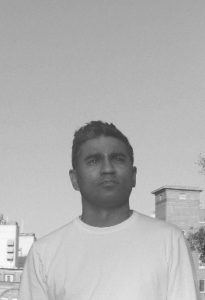
Reginald S. Aloysius (b. 1970) was born in London. The artist graduated with a BFA from the Ruskin School of Drawing and Fine Art, Oxford University and received his MA in Drawing from Kingston University, London. Aloysius has been shortlisted for a number of prizes including the 2011 Jerwood Prize and won the 2015 National Art Prize. He has also participated in the Colombo Art Biennale 2014 and the Royal Academy Summer Exhibition (by invitation). His work has been widely exhibited in London, Hong Kong, Sri Lanka and the United States.
Savyasachi Anju Prabir
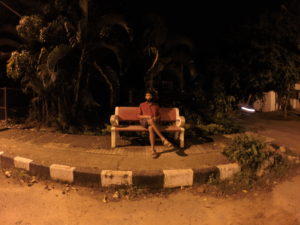
Hello, I’m Savyasachi and I record everyday videos, sounds and images. Sometimes I make films out of them and sometimes I just play them back to myself.
I am primarily interested in the everyday mundane and its reflections/influences on the lives of people across generations and cultures.
At present, I am interested in exploring the relationships between photography and film as a medium, as a mode of representation and as a form of public archive/documentation.
Tiago Rocha Costa

Tiago Rocha Costa has a degree in Visual Arts from the University of Évora (Portugal) and is currently finishing a Masters in Painting at the Faculty of Fine Arts of the University of Lisbon. With an interdisciplinary practice, Costa’s work addresses topics such as the domestication and extinction of nature, which he explores through references to natural science and archeology. His production is presented in the form of decontextualized fragments, whether they are paintings removed from the walls of ruins, sculptures destroyed by birds, fabricated fossils or fictional scenarios: realities that seek to arouse a feeling of curiosity and admiration for what is latent or disappearing.
Yoonha Kim
Yoonha Kim is interested in how people imagine the future and take action. Her focus is on diversification of garment structures connected to alternative ways of living amid technological contexts such as augmented reality, outer space exploration, and artificial intelligence. She studied Fashion Design at Central Saint Martins in London, and Visual and Media Anthropology at the Freie Universität Berlin. In her PhD research at Humboldt University, she is currently looking into traditional Korean clothing – the ›Hanbok‹ – as an active matter and how the East Asian ontology embedded in the garment can trigger divergent ways of how digital objects exist.